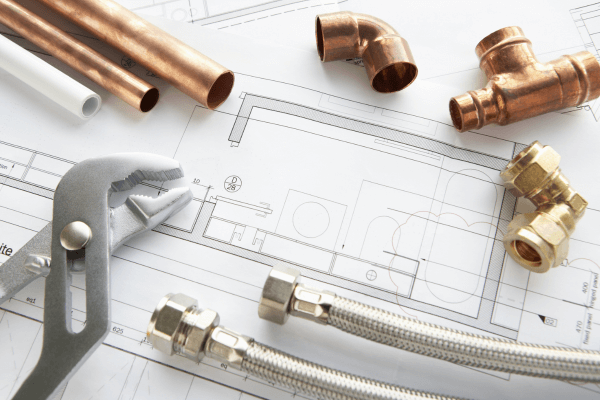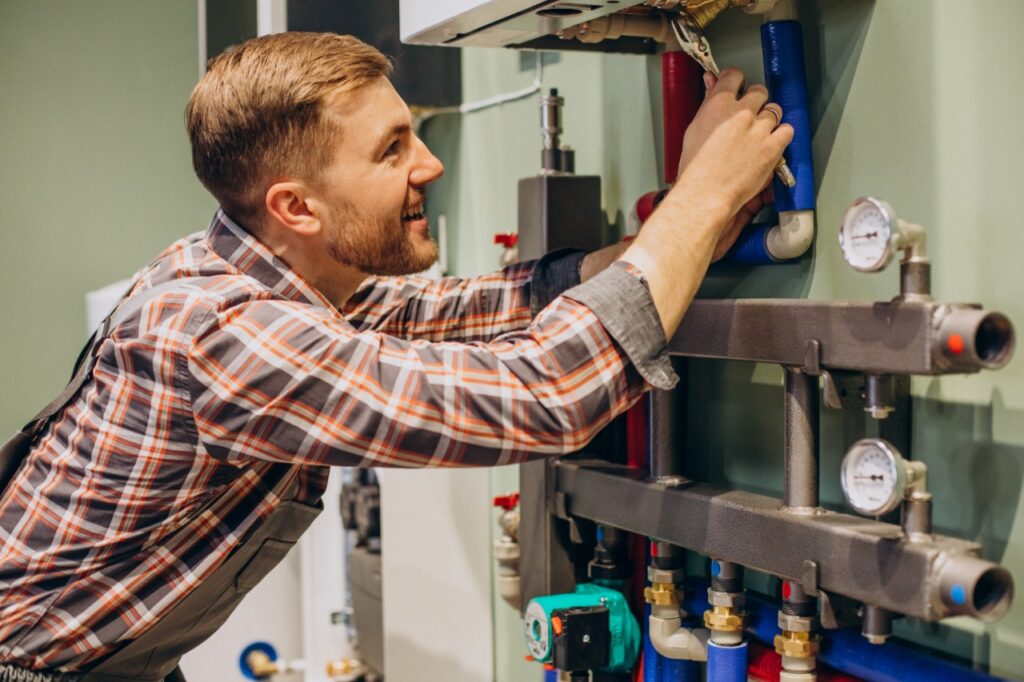An Overview to Your House's Plumbing System Anatomy
An Overview to Your House's Plumbing System Anatomy
Blog Article
This great article further down on the subject of Plumbing Installation 101: All You Need to Know is exceptionally motivating. Try it and make your own results.

Recognizing exactly how your home's plumbing system works is essential for every single home owner. From providing clean water for drinking, food preparation, and showering to safely removing wastewater, a well-maintained plumbing system is critical for your family members's wellness and convenience. In this thorough overview, we'll check out the complex network that comprises your home's plumbing and offer tips on maintenance, upgrades, and taking care of typical problems.
Intro
Your home's pipes system is more than simply a network of pipelines; it's an intricate system that guarantees you have accessibility to tidy water and efficient wastewater removal. Recognizing its parts and exactly how they collaborate can aid you stop expensive repair work and guarantee everything runs efficiently.
Basic Elements of a Pipes System
Pipes and Tubes
At the heart of your plumbing system are the pipelines and tubes that bring water throughout your home. These can be made of different materials such as copper, PVC, or PEX, each with its advantages in regards to resilience and cost-effectiveness.
Fixtures: Sinks, Toilets, Showers, and so on.
Fixtures like sinks, bathrooms, showers, and bathtubs are where water is utilized in your home. Comprehending just how these fixtures connect to the pipes system aids in identifying troubles and intending upgrades.
Valves and Shut-off Factors
Valves control the circulation of water in your plumbing system. Shut-off valves are vital during emergency situations or when you require to make repair work, permitting you to separate parts of the system without disrupting water circulation to the whole house.
Water System System
Key Water Line
The major water line connects your home to the municipal supply of water or an exclusive well. It's where water enters your home and is dispersed to numerous fixtures.
Water Meter and Pressure Regulator
The water meter procedures your water use, while a stress regulator guarantees that water moves at a safe stress throughout your home's plumbing system, protecting against damage to pipes and components.
Cold Water vs. Hot Water Lines
Comprehending the distinction between cold water lines, which provide water directly from the major, and warm water lines, which carry warmed water from the hot water heater, helps in fixing and planning for upgrades.
Drainage System
Drain Water Lines and Traps
Drain pipelines carry wastewater far from sinks, showers, and toilets to the sewage system or septic system. Catches prevent sewage system gases from entering your home and also trap debris that might trigger obstructions.
Air flow Pipelines
Air flow pipelines permit air right into the water drainage system, preventing suction that can reduce water drainage and create catches to empty. Proper ventilation is important for maintaining the stability of your plumbing system.
Relevance of Proper Drain
Making sure correct drain avoids backups and water damages. Routinely cleaning drains pipes and preserving traps can avoid expensive repair work and extend the life of your pipes system.
Water Heater
Kinds Of Water Heaters
Water heaters can be tankless or traditional tank-style. Tankless heaters warmth water as needed, while tanks save warmed water for immediate use.
Updating Your Pipes System
Reasons for Upgrading
Upgrading to water-efficient components or changing old pipelines can enhance water top quality, minimize water bills, and increase the worth of your home.
Modern Plumbing Technologies and Their Advantages
Check out innovations like smart leak detectors, water-saving commodes, and energy-efficient hot water heater that can save money and minimize ecological influence.
Expense Considerations and ROI
Determine the in advance prices versus long-lasting savings when thinking about plumbing upgrades. Many upgrades spend for themselves via minimized utility expenses and less repairs.
Just How Water Heaters Connect to the Pipes System
Understanding exactly how hot water heater connect to both the cold water supply and warm water distribution lines assists in detecting problems like insufficient warm water or leakages.
Maintenance Tips for Water Heaters
Consistently purging your water heater to get rid of sediment, inspecting the temperature level settings, and evaluating for leakages can expand its lifespan and enhance power efficiency.
Typical Pipes Issues
Leakages and Their Reasons
Leakages can take place as a result of aging pipes, loosened installations, or high water stress. Dealing with leaks quickly prevents water damages and mold development.
Blockages and Clogs
Blockages in drains pipes and commodes are typically brought on by flushing non-flushable things or a buildup of grease and hair. Utilizing drainpipe displays and being mindful of what decreases your drains pipes can prevent blockages.
Indicators of Pipes Troubles to Watch For
Low tide stress, slow drains, foul odors, or unusually high water expenses are signs of prospective pipes problems that must be addressed without delay.
Plumbing Upkeep Tips
Routine Assessments and Checks
Schedule annual pipes evaluations to capture issues early. Try to find signs of leaks, deterioration, or mineral build-up in faucets and showerheads.
Do It Yourself Maintenance Tasks
Easy jobs like cleansing faucet aerators, looking for bathroom leakages utilizing color tablets, or insulating subjected pipelines in cool climates can stop major pipes concerns.
When to Call a Professional Plumbing Technician
Know when a pipes issue needs professional proficiency. Trying intricate repair work without appropriate expertise can lead to even more damages and greater repair prices.
Tips for Lowering Water Use
Straightforward habits like fixing leaks quickly, taking shorter showers, and running complete tons of washing and meals can save water and reduced your energy expenses.
Eco-Friendly Pipes Options
Consider lasting pipes materials like bamboo for flooring, which is durable and environmentally friendly, or recycled glass for countertops.
Emergency situation Preparedness
Steps to Take During a Pipes Emergency situation
Know where your shut-off shutoffs are located and exactly how to turn off the water in case of a ruptured pipeline or major leakage.
Relevance of Having Emergency Situation Calls Useful
Keep call info for local plumbers or emergency situation services conveniently offered for fast reaction during a plumbing situation.
Ecological Impact and Preservation
Water-Saving Components and Appliances
Installing low-flow taps, showerheads, and bathrooms can considerably reduce water use without compromising efficiency.
Do It Yourself Emergency Fixes (When Applicable).
Short-lived repairs like using air duct tape to patch a leaking pipe or positioning a container under a dripping tap can lessen damage till an expert plumber arrives.
Verdict.
Comprehending the anatomy of your home's pipes system encourages you to preserve it efficiently, saving time and money on repairs. By adhering to regular upkeep routines and remaining notified concerning modern pipes technologies, you can ensure your pipes system operates effectively for several years to find.
Exploring Your Homes Plumbing Anatomy
Water Supply System
Main Water Line: This is where water enters your home from the municipal supply or a private well. Water Meter: Typically located near where the main water line enters the property, it measures the amount of water used. Shutoff Valve: It s crucial to know where this is in case of emergencies. It allows you to turn off the water supply to the entire house. Pipes and Fittings: These distribute water throughout your home. Materials can include copper, PVC, or PEX. Drain-Waste-Vent (DWV) System
Drains: Located in sinks, showers, and tubs, these carry wastewater away. Traps: U-shaped pipes under sinks that hold standing water, blocking sewer gases from entering the home. Vents: Pipes that lead from the DWV system to the outside, preventing vacuum formation and allowing gases to escape. Sewer Line: Carries all wastewater from the home to the municipal sewer system or a septic tank. Fixtures and Appliances
Sinks, Toilets, and Showers Dishwashers and Washing Machines Water Heaters Maintenance Tips
Regularly check for leaks in exposed pipes and around fixtures. Inspect the water heater annually for signs of wear. Clean drains and traps to prevent clogs and odors. Know how to shut off water to individual fixtures. When to Call a Professional
Major leaks or burst pipes Installation of new pipes or fixtures Septic tank issues Remodeling projects that involve plumbing changes Conclusion
Understanding the anatomy of your home's plumbing is key to maintaining a functional and efficient system. Regular checks and knowing when to call in the experts can save you time, money, and stress.
https://www.mavyn.com/blog/exploring-your-homes-plumbing-anatomy

As a reader about Anatomy of a House: Understanding the Components, I assumed sharing that section was important. If you appreciated our post if you please do not forget to pass it around. Thanks so much for your time spent reading it.
Visit Website Report this page